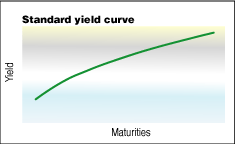Are Things Different This Time Around?
The Inverted Yield Curve
by Kathy Lien
An inverted yield curve has implications in regards to the US dollar and the economy. Will they both suffer?
The potential of a yield curve inversion has been a major topic in the markets over the past few months. With two-year US Treasury bonds yielding 4.60% at the time of this writing and the 10-year bonds yielding 4.31%, the fear is a valid one. The spread has been shrinking for months now, with the first inversion between the two- and 10-year notes occurring in the last week of December 2005. This is the first time that the spread has gone negative since 2000, which was right before the burst of the tech bubble. Interestingly, the inversion, which is believed to come hand in hand with a recession, has not caused a wave of panic because many experts believe that this time around, things will be different.
Whether or not it is different will remain a debate only time can settle, but in the meantime, what we do find interesting is that contrary to popular thought, yield curve inversions are not necessarily bad for the US dollar.
DEFINING THE YIELD CURVE INVERSION
Before we discuss what an inverted yield curve is, it is important to understand what a normal yield curve and an inverted yield curve look like. In a healthy yield curve, short-term interest rates are lower than longer-term interest rates because investors need to be compensated for taking a higher risk by purchasing a bond with a longer maturity (Figure 1). An inverted yield curve occurs when the short-term interest rate is actually higher than the long-term one (Figure 2).

FIGURE 1: STANDARD YIELD CURVE. Here, the short-term interest rates are lower than longer-term interest rates.
...Continued in the April issue of Technical Analysis of STOCKS
& COMMODITIES
Excerpted from an article originally published in the April 2006 issue of Technical Analysis of STOCKS & COMMODITIES magazine. All rights reserved. © Copyright 2006, Technical Analysis, Inc.
Return to April 2006 Contents